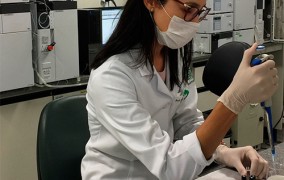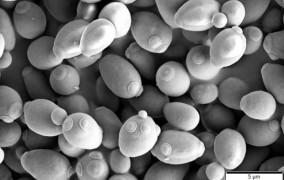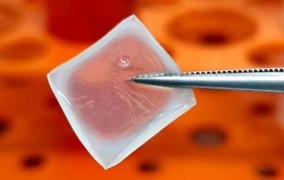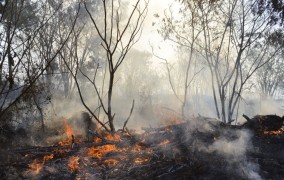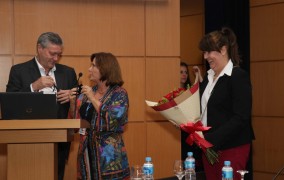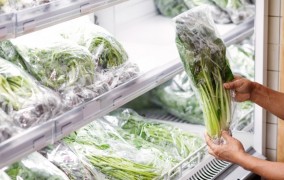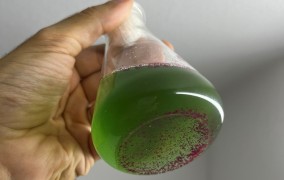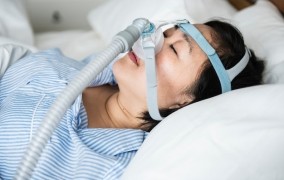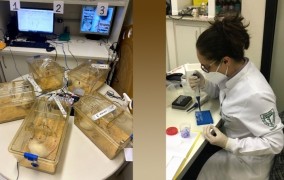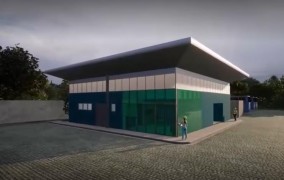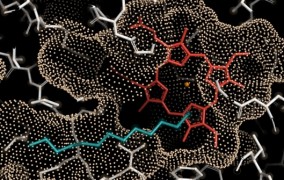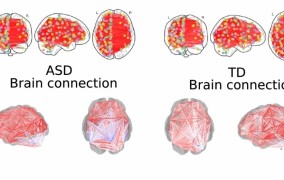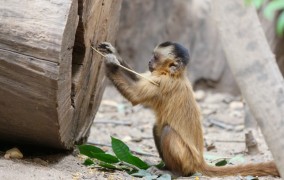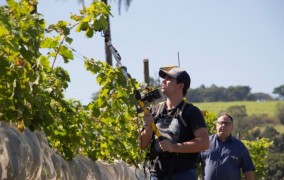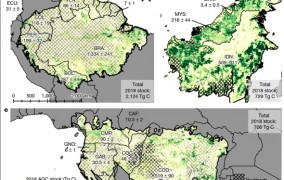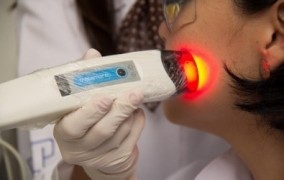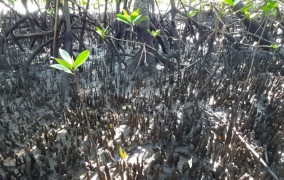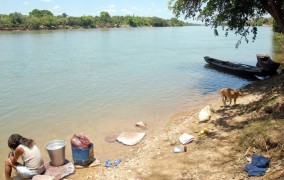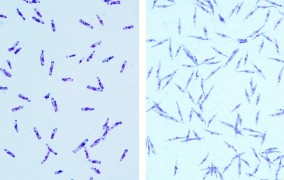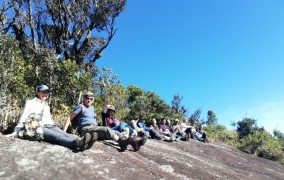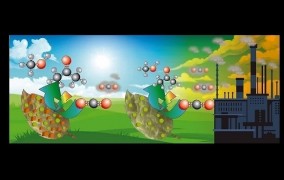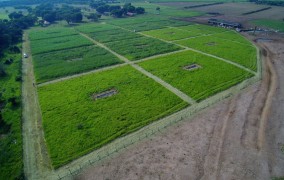
Search: 4362 news
-
Oral health deteriorates before and after bariatric surgery, study shows
2023-09-06Researchers at the Federal University of São Paulo analyzed saliva, oral microbiota and dental health of volunteers who were preparing for gastroplasty and after the operation. The results showed an increase in caries and periodontitis, as well as alterations in salivary inflammatory markers. -
Study explains role of certain types of oxide in structure and development of specialty glass
2023-09-06Applications of specialty glass range from astronomy to medicine, as well as data and power transmission. The study combined spectroscopy and computational modeling to show how the structure of the material is affected by addition of niobium oxide. -
Researchers track yeast population dynamics in fuel bioethanol production
2023-08-30A study by researchers at the State University of Campinas and Harvard University shows that despite the presence of invasive strains of Saccharomyces cerevisiae, all of them belong to the ethanol fermentation environment, keeping the industrial process stable. Their findings can help cut costs and assure better results for producers. -
In Situ Cell Therapy wins eAwards Brazil 2023
2023-08-30With FAPESP’s support, the startup developed a smart biodressing produced by 3D printing and designed to accelerate skin wound healing. It will compete for a Global eAward in October. -
A new system for predicting fire propagation in the Cerrado in quasi-real time
2023-08-30Available free of charge on the internet, the platform simulates fire propagation in the savanna biome three times a day and is in use in nine conservation units. -
Leading scholar for a greener agriculture, Mr. Cantarella retires from FAPESP Bioenergy Research Program
2023-08-30Heitor Cantarella was a member of BIOEN-FAPESP’s steering committee for 14 years. As a researcher at the São Paulo State Institute of Agronomy in Campinas, he has made groundbreaking contributions to efforts to reduce greenhouse gas emissions in agriculture. -
Food supplementation with coconut oil can cause obesity, study shows
2023-08-30In experiments with mice, researchers at the State University of Campinas observed alterations in feed consumption, weight gain, anxious behavior and an increase in central nervous system, adipose tissue and liver inflammation. -
Sanitized ready-to-eat salad may contain disease-causing bacteria
2023-08-29A review of research on minimally processed vegetables highlights cases of unsatisfactory microbiological safety and calls for best practice assurance throughout the supply chain. -
Glitter impairs growth of organisms with key roles in aquatic ecosystems, study shows
2023-08-23Researchers at the University of São Paulo investigated the effects of five concentrations of glitter on two strains of cyanobacteria. Use of the material in makeup, party costumes and decorations should be reconsidered, they argue. -
Sleep apnea accelerates aging, but use of breathing therapy method can mitigate the problem
2023-08-23In a study involving 46 volunteers, researchers at the Federal University of São Paulo found that telomere shortening, a biomarker of cellular aging, accelerated in untreated obstructive sleep apnea patients, whereas continuous positive airway pressure attenuated the damage. -
Brazilian researchers win prize for AI resources developed to analyze and classify asteroids
2023-08-23Based on artificial intelligence techniques such as neural networks and machine learning, the system takes seconds to perform tasks that used to take months. It will extract useful information from the gigantic amount of data furnished by the new Vera C. Rubin telescope. -
Study reveals how deep brain stimulation helps control epilepsy
2023-08-23Experiments with rats at the Federal University of São Paulo suggest that the technique promotes reprogramming of the neurons affected by the disease, making them return to a normal state and interrupting seizures. Increased production of adenosine appears to play a key role in the process. -
A cost-benefit analysis of green roofs in Brazil and South Africa
2023-08-23A model developed by a cross-border collaboration including Brazilian researchers could help decision-makers assess the real impact of green roofs on the urban food-water-energy nexus. -
World’s first hydrogen-from-ethanol plant will be built at University of São Paulo
2023-08-23The project is the result of a partnership between FAPESP and Shell and could help make hydrogen a widely used fuel in Brazil. Hydrogen from a pilot plant to be built at USP using Raízen’s ethanol will power buses on the campus. -
Build-up of abdominal fat increases risk of vitamin D insufficiency and deficiency, study shows
2023-08-16A collaborative study by Brazilian and British researchers shows for the first time that obesity can cause a lack of vitamin D and not the other way around. The risk of vitamin D insufficiency and deficiency in subjects with abdominal obesity was 36% and 64% higher respectively than in those without. -
Novel enzyme could boost sustainable production of aviation fuel
2023-08-16A biocatalyst discovered by Brazilian researchers has the potential to increase renewable biofuel output by removing obstacles in technology and production processes, as well as enhancing the manufacturing of bioplastics and biopolymers. -
Study proposes use of artificial intelligence to diagnose autism spectrum disorder
2023-08-16Researchers used magnetic resonance imaging to train a machine learning algorithm to help diagnose autism. The study involved physicists, statisticians, physicians and neuroscientists from centers in Brazil, France and Germany. -
Capuchin monkeys that spend more time on the ground use tools in more ways than one
2023-08-16Primates in a Brazilian national park spend 41% of their time on the ground. Territoriality influences stone tool use, the behavior of females while on heat, and care of disabled individuals. -
Precision agriculture produces different winter wines from the same vineyard
2023-08-16A project conducted by the Brazilian Agricultural Research Corporation (EMBRAPA) cross-referenced data from sensors to analyze soil and weather variations in the same vineyard so as to produce different wines and improve water and fertilizer management. Wineries in São Paulo state are already benefiting from the results. -
Tropical forest regeneration offsets 26% of carbon emissions due to deforestation and degradation
2023-08-16A study published in Nature and led by scientists at Brazil’s National Space Research Institute (INPE) and Bristol University in the UK describes a novel methodology for calculating the carbon absorption capacity of recovering areas in the Amazon, Congo and Borneo, which contain the world’s largest tropical rainforests. Together these areas remove at least 107 million metric tons from the atmosphere every year. -
Innovation to treat skin cancer will be used by Brazil’s public health clinics
2023-08-09Photodynamic therapy developed by the Center for Research in Optics and Photonics, which is supported by FAPESP, has been recommended by Brazil’s federal body responsible for including novel healthcare technologies in the national health service. -
Rare long-distance dispersal events help maintain genetic structure of mangroves
2023-08-09A study combining genetic analysis and oceanographic simulations showed that a species of mangrove rarely disperses very far, so that North and South Brazil have two distinct populations. The results can help prioritize conservation units and understand global patterns in mangrove forest formation. -
Novel socio-environmental vulnerability index pinpoints sustainability issues in Brazilian river basins
2023-08-09The innovative approach highlights vulnerability to deforestation, fire and drought, as well as poverty. The results can help formulate public policies for sustainable development. -
Exercise is beneficial even in a polluted environment, study shows
2023-08-09Researchers at the University of São Paulo analyzed inflammatory markers in cyclists who trained regularly and had been exposed to traffic-related pollution. The results of the experiment, which was conducted in São Paulo city, are published in the American Journal of Physiology. -
Co-infection by novel species of parasite is confirmed in visceral leishmaniasis patient
2023-08-09Genome sequencing of clinical samples from a child hospitalized in Aracaju, the capital of Sergipe state (Brazil), revealed the simultaneous presence of the protozoan Leishmania infantum and an as-yet unnamed parasite belonging to the genus Crithidia, identified earlier in a fatal case of visceral leishmaniasis in the same region. -
Cross-border consortium investigates long-term effects of pandemic on children and young adults
2023-08-09The aim of the study is to understand the strategies used by children and young people in low-income households to adapt to the public health crisis and economic hardship in the UK, South Africa and Brazil. -
Study proposes refinement of models to project ecosystem services in montane forests
2023-08-02Modeling projections depend on the installation of networks specific to these areas in Brazil and the Andes, where the available data falls far short of what is needed. -
Researchers explore strategies to convert CO2 into value-added products for industry
2023-08-02One of the goals of the study conducted by scientists at the Center for Development of Functional Materials and the Center for Innovation on New Energies is to reduce atmospheric emissions of this greenhouse gas. -
Luzio, who lived in São Paulo 10,000 years ago, was Amerindian like Indigenous people now, DNA reveals
2023-08-02An investigation covering four different parts of Brazil carried out analysis of genomic data from 34 fossils, including larger skeletons and the famous mounds of shells and fishbones built on the coast, and revealed differences between communities. An article on the study is published in Nature Ecology & Evolution. -
Substitution of tolerant for sensitive species balances ecosystems in agricultural areas, study says
2023-08-02Research conducted in manipulated sugarcane plots showed that small water bodies such as ponds and puddles can contribute to sustainable farming even with environmentally hostile practices.
Most popular
-
Amazon scorpion toxin kills breast cancer cells
2025-06-18
-
Spending more than 3 hours a day sedentary worsens teens’ mental health
2025-02-20
-
Climate change could drastically reduce aquifer recharge in Brazil
2025-09-17
-
Microplastics may affect bone health
2025-09-17
-
‘Science alone will not save us’: Paulo Jannuzzi highlights the need for republican values
2025-09-17
-
Butantan Institute says its dengue vaccine protects against serotype 3
2025-02-05
-
FAPESP aims to boost the development of quantum technologies in Brazil
2025-01-15
-
Molecule reverses cognitive deficits associated with aging and dementia in animal tests
2025-05-12
-
Ants defend plants from herbivores but can hinder pollination
2025-09-15
-
Personality traits influence the development of insomnia
2025-05-19





